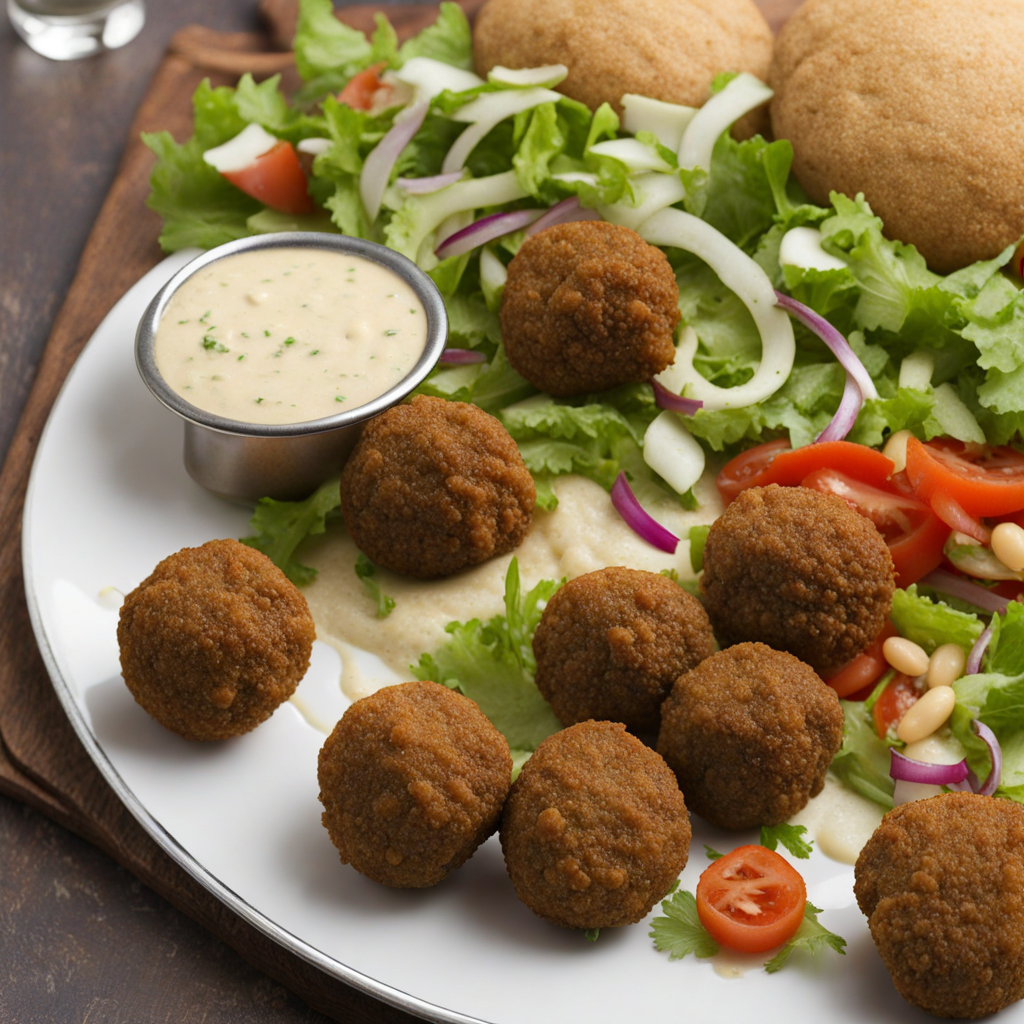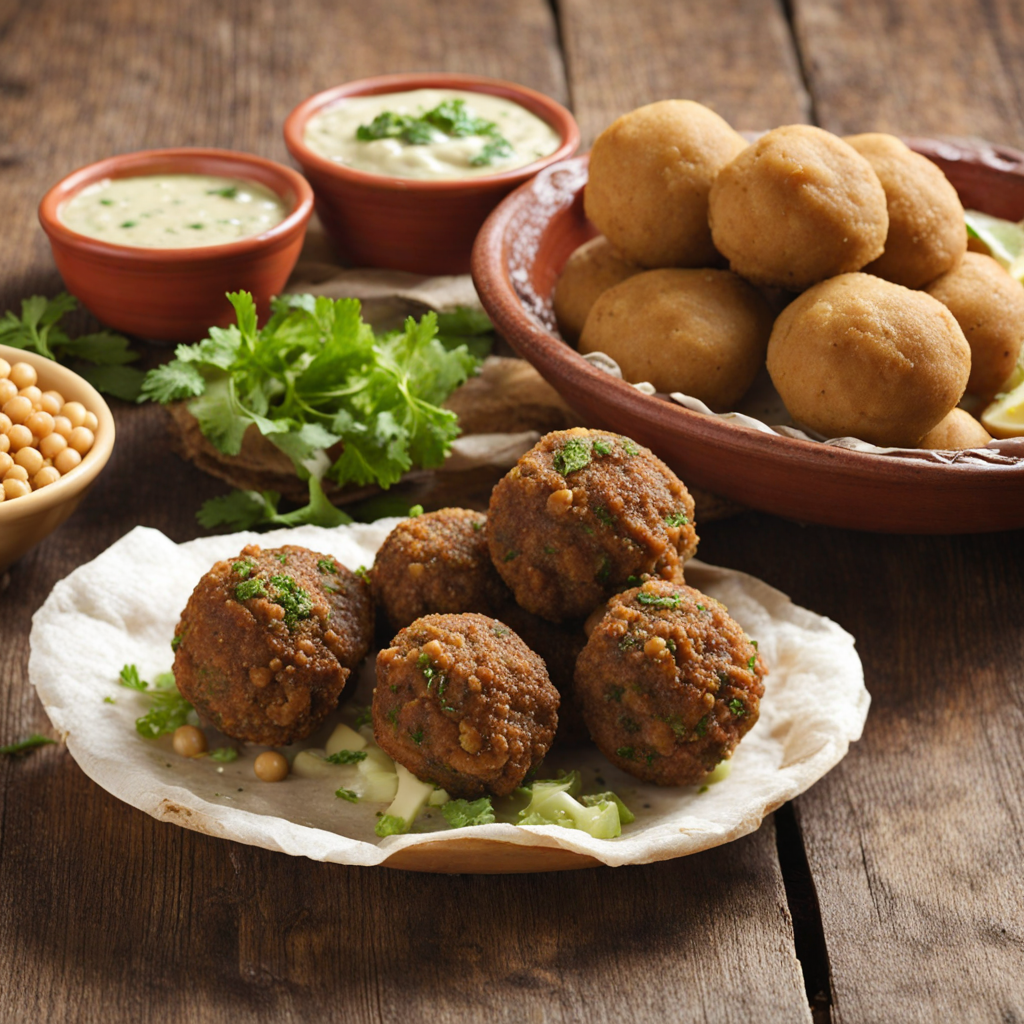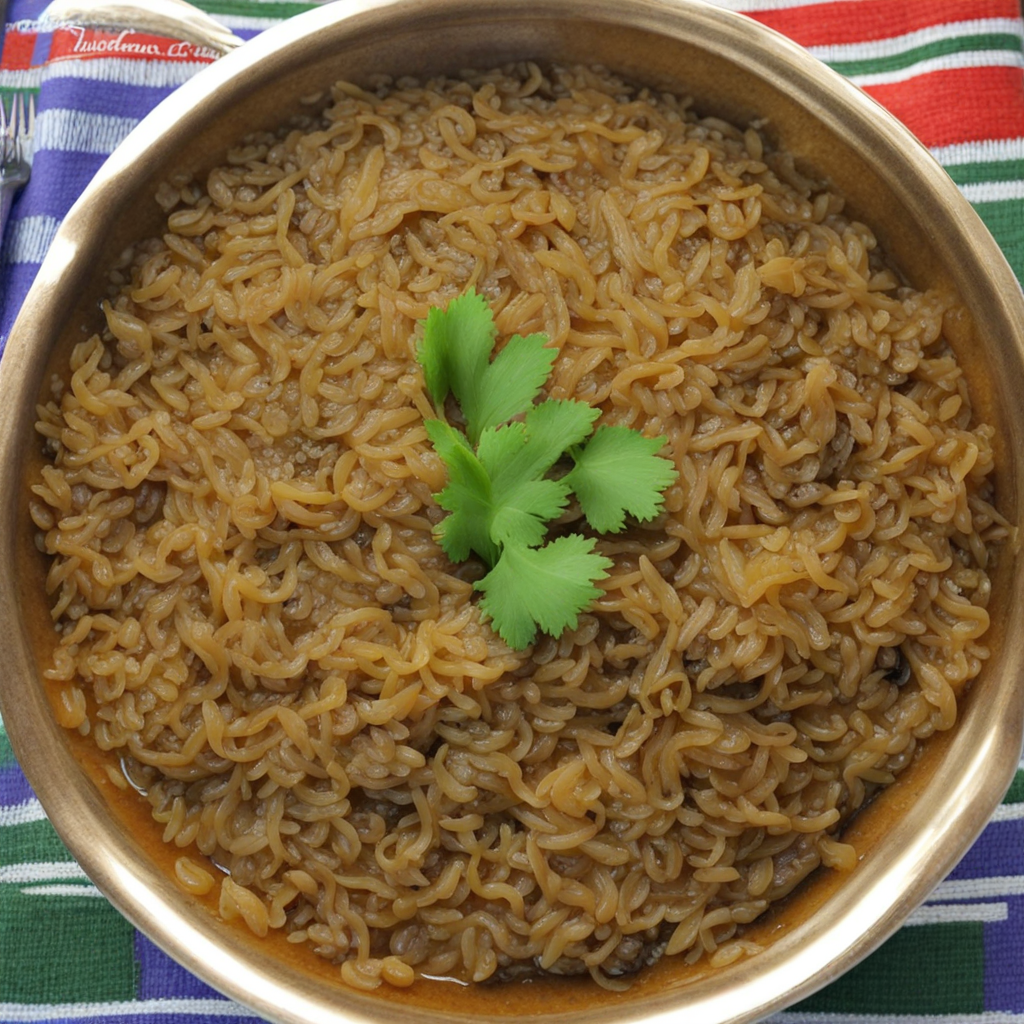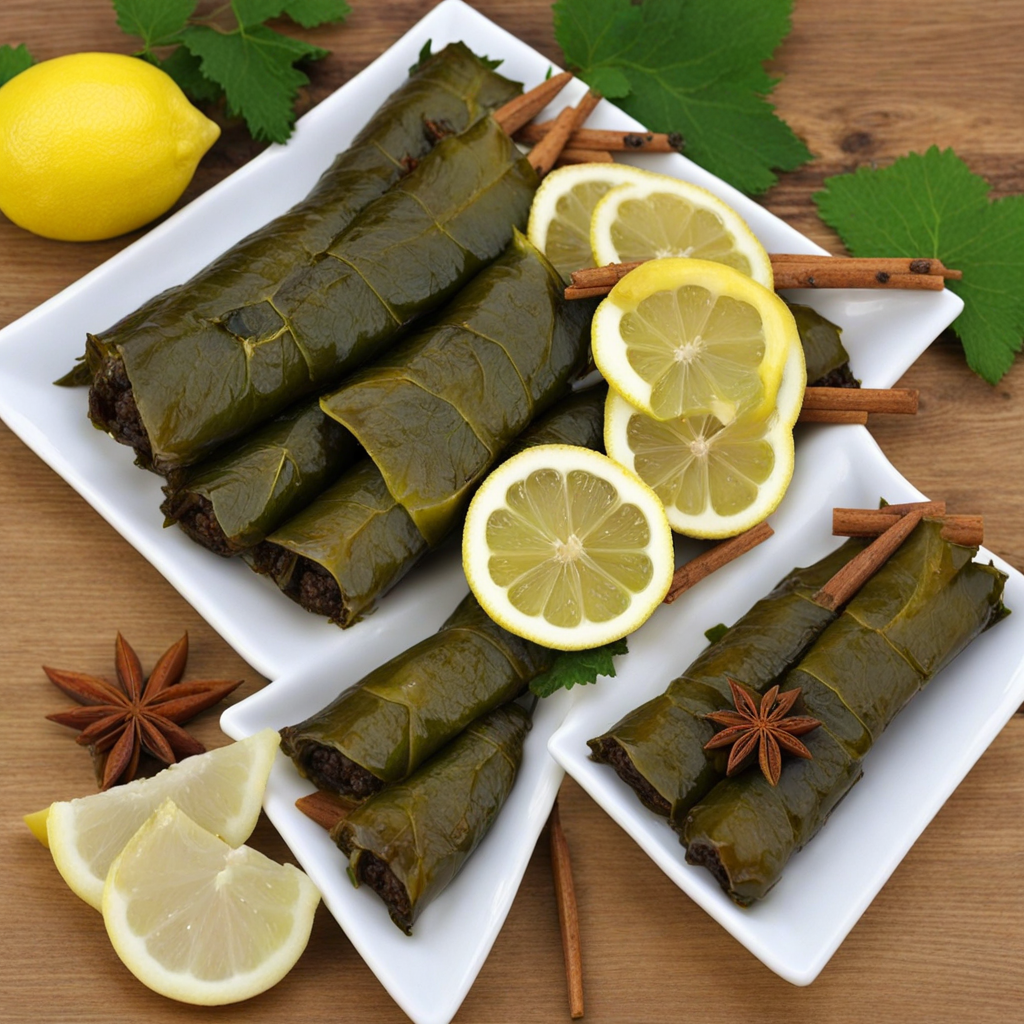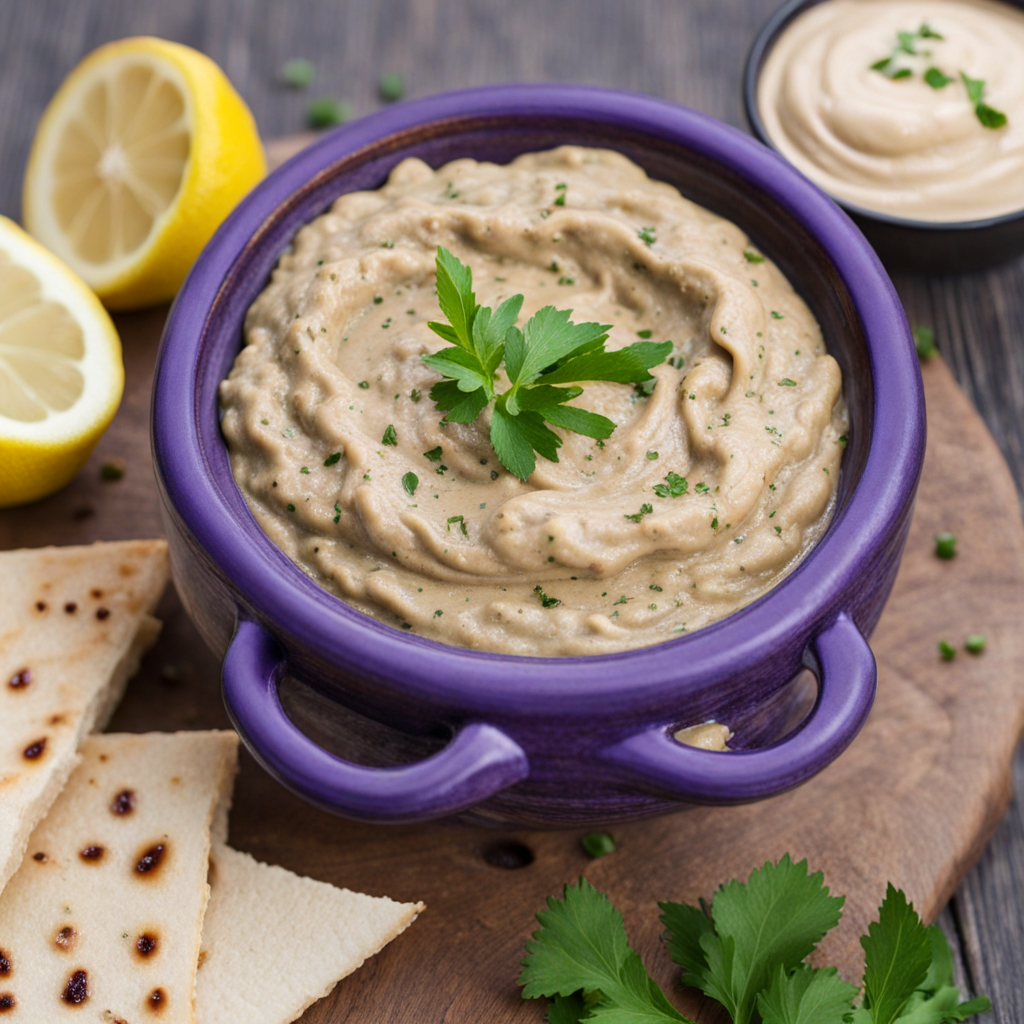Falafel
Falafel is a delightful and aromatic dish that hails from the Middle East, with its roots deeply embedded in Syrian cuisine. These small, round patties are made primarily from ground chickpeas or fava beans, mixed with a blend of fresh herbs, garlic, and spices. The mixture is formed into balls or patties and then deep-fried to golden perfection, resulting in a crispy outer layer that gives way to a soft, flavorful interior. The use of fresh ingredients like parsley, cilantro, and cumin adds a vibrant and earthy taste, making each bite a burst of flavor. Served often as a street food, falafel is typically accompanied by a variety of sides and sauces that enhance its taste. A common way to enjoy falafel is in a pita wrap, where the patties are nestled alongside fresh vegetables like tomatoes, cucumbers, and pickles. Dressed with tahini sauce or a spicy chili sauce, each component complements the falafel's crispiness and herby undertones, creating a satisfying and well-rounded meal. The contrast between the crunchy falafel and the freshness of the vegetables is simply irresistible. In Syria, falafel is not just food; it’s a cultural experience that brings people together. It is often enjoyed during gatherings or as a quick snack while on the go. The dish is also incredibly versatile, making it suitable for a variety of dietary preferences, including vegetarian and vegan diets. Whether enjoyed on its own, as part of a mezze platter, or in a sandwich, falafel offers a unique taste that captures the essence of Syrian flavors, inviting food lovers to explore and appreciate the rich culinary heritage of the region.
How It Became This Dish
The History of فلافل: A Culinary Journey from Syria #### Origins The story of فلافل (falafel) is one steeped in rich tradition and cultural significance, believed to have originated in the Middle East, with deep roots in Syrian cuisine. While the precise origins of falafel remain a topic of debate among food historians, many agree that its earliest iterations can be traced back to ancient times, possibly even as far back as the Pharaonic era in Egypt. However, the modern version of falafel as we know it today is largely attributed to the Levant region, particularly Syria and Lebanon. Traditionally made from fava beans (broad beans), falafel is a deep-fried ball or patty that has become a beloved street food and snack throughout the Arab world. The use of herbs and spices, such as cumin, coriander, garlic, and parsley, reflects the vibrant flavors of Syrian cuisine. The emergence of chickpeas as a primary ingredient in falafel is believed to have occurred later, likely in the mid-20th century, as these legumes became more widely available and popular in various regions. #### Cultural Significance In Syria, falafel is more than just a food; it is a cultural icon that embodies the essence of Syrian hospitality and communal dining. Consumed across all social classes, falafel is often a staple in the diets of many Syrians, served with fresh vegetables, pickles, and tahini sauce, and wrapped in pita bread. It is commonly enjoyed during gatherings, celebrations, and family meals, symbolizing unity and shared experiences. Falafel has also found a place in Syrian folklore and literature. It represents not only sustenance but also the resilience of the Syrian people, particularly in times of conflict and upheaval. Throughout history, falafel has served as a comfort food, reminding individuals of home and tradition even in the face of adversity. For many Syrians, the act of preparing and sharing falafel carries emotional weight, as it is intertwined with memories of family and community. #### Development Over Time The evolution of falafel can be mapped across various historical and social changes within Syria and the broader Middle East. During the Ottoman Empire, which lasted from the 14th century to the early 20th century, the culinary landscape of the region saw significant influences from diverse cultures, enhancing the flavors and preparation methods of falafel. Street vendors began selling falafel in bustling markets, making it an accessible and popular food choice among the masses. As the 20th century progressed, falafel began to spread beyond its Syrian roots. The migration of people throughout the Middle East and the diaspora communities helped to introduce falafel to new audiences, with variations emerging in different countries. In Egypt, for instance, falafel is still predominantly made from fava beans, while in countries like Israel and Palestine, chickpeas have become the main ingredient, showcasing the adaptability of this dish to regional preferences. The mid-20th century also marked a significant period for falafel's international recognition. As the world became more interconnected, Middle Eastern cuisine gained popularity globally. In the 1970s and 1980s, the rise of fast-food culture led to the introduction of falafel in Western cities, particularly in areas with significant Middle Eastern immigrant populations. Falafel stands and restaurants began to pop up, offering a quick, affordable, and vegetarian-friendly alternative to traditional fast food. Moreover, with the increase in vegetarianism and veganism, falafel has enjoyed a resurgence in popularity in recent decades. Its health benefits, including high protein content and use of wholesome ingredients, have made it a favorite among those seeking nutritious options. This trend has contributed to the establishment of falafel as a staple in restaurants and cafes around the world, often served alongside salads, rice, and other accompaniments. #### Globalization and Modern Interpretations In the 21st century, falafel has transcended its humble beginnings to become a global phenomenon. It is now found in various forms and interpretations around the world, from gourmet versions in upscale restaurants to fusion dishes incorporating unique ingredients and flavors. In cities like New York, London, and Berlin, falafel has become a symbol of multiculturalism, appealing to diverse palates and cultural backgrounds. The globalization of falafel has also sparked conversations about authenticity and cultural appreciation. While some purists advocate for traditional recipes and methods, others embrace the creativity and innovation that comes with modern interpretations. This dialogue reflects broader themes of cultural exchange and adaptation, as cuisines evolve and interconnect in our increasingly globalized world. #### Conclusion The history of فلافل is a testament to the enduring power of food as a cultural symbol and a means of connection. From its ancient origins to its contemporary global presence, falafel embodies the spirit of the Syrian people and their rich culinary heritage. As a dish that has adapted and transformed over time, falafel continues to bring people together, fostering a sense of community and shared experience. Whether enjoyed as a quick snack on the streets of Damascus or as a gourmet dish in a bustling metropolis, falafel remains a beloved and significant part of the culinary landscape. It serves as a reminder of the importance of tradition, the joy of sharing food, and the resilience of cultures in the face of change. As we savor the flavors of falafel, we celebrate not just a dish, but the stories and histories intertwined within it—a delicious journey that spans centuries and continents.
You may like
Discover local flavors from Syria


